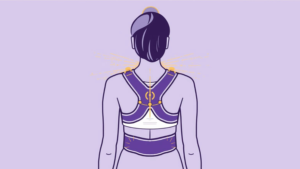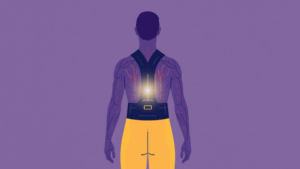Recovering from surgery can be challenging. Whether you’ve undergone abdominal surgery, a C-section, spinal surgery or hernia repair. Your body needs time, care and proper support to heal from surgery. Post-surgery support belts are useful recovery tools.
These belts are designed to provide smooth compression and stability to surgical areas, which help reduce pain, improve posture and prevent complications. Today’s belts are lightweight, breathable and adjustable which make them more comfortable for everyday use.
For most patients, the first few weeks after surgery are the hardest. Simple tasks like standing, walking or even coughing can feel painful [1]. This is where support belts come; it’s not a replacement for medical care but as an additional aid that makes recovery smoother. Someone recovering from abdominal surgery may find it difficult to move without straining their stitches. A belt gently holds the muscle together, providing proper movement without fear of injury. Likewise, after a C-section, many new mothers use these belts to overcome discomfort, support their abdomen and resume their daily routines with more comfort.
The role of post surgery support belts goes beyond physical relief. They provide stability and also help reduce the anxiety that often comes with recovery. Many patients worry about reopening wounds or worsening pain through daily movement. So wearing a belt acts as a protective layer, giving reassurance and allowing them to focus more on healing rather than worrying.
Modern medical belts are comfortable than in the past. It comes with breathable fabrics, adjustable straps and lightweight designs and they are built for convenience and comfort. Some are tailored for specific surgeries ensuring targeted support that aligns with medical needs.
Certainly, it’s important to remember that these belts are not a cure-all. Their true value comes when they are used as part of a holistic recovery plan that includes proper rest, nutrition, gentle exercise and medical supervision.Misuse of belts like over reliance or using the wrong size can hinder rather than help recovery.
In this article, we’ll dive deep into what post surgery support belts are, their benefits, types, who needs them, usage, myths and lifestyle tips to boost healing. At the end, you’ll have a clear understanding of how post surgery support belts can make a real difference in restoring comfort, mobility and quality of life.
Want to dive deeper? Here are a few related reads you’ll enjoy:
- https://betterhood.in/learn/back-relief-belt-benefits-uses-and-buying-guide/
- https://betterhood.in/learn/how-back-support-belts-can-protect-your-back/
What is a Post-Surgery Support Belt?
A post surgery support belt is mostly called a surgical binder or abdominal belt and is a medical device worn around the abdomen, waist or back after surgery. Its main role is to provide compression and support to the affected area, reducing strain on muscle and tissues.
The working principle is simple:
- The belt applies gentle, consistent pressure that stabilizes surgical incisions.
- It reduces movement stress on stitches or sutures.
- The compression improves blood circulation, which may speed up healing.
- It supports weak muscles, preventing complications like hernias or poor posture.
Benefits of Post-Surgery Support Belts
Post-surgery belts are more than just accessories, they serve a medical purpose. Let’s look at their key benefits:
1. Pain Relief and Comfort
After surgery, even simple movements like coughing, sneezing, or standing can cause discomfort. Belts provide firm but gentle support, reducing pain and making daily activities more manageable.
2. Support for Surgical Incisions
They stabilize the area around incisions, helping prevent suture strain or accidental reopening of wounds. For abdominal surgeries or C-sections, this added support is crucial.
3. Reduced Swelling and Fluid Build-Up
Gentle compression helps control post-operative swelling (edema) and minimizes fluid accumulation around the surgical site.
4. Improved Mobility
Instead of feeling restricted, patients often regain confidence in walking, standing, or sitting knowing their body is supported.
5. Prevention of Complications
Belts can lower the risk of incisional hernias, posture problems, and delayed healing by keeping muscles and tissues aligned.
6. Psychological Reassurance
For many patients, belts provide a sense of security, the reassurance that they are supported and protected while recovering [2].
Types of Post-Surgery Support Belts
Not all surgeries require the same kind of support. Here are the most common types:
- Abdominal Binders
- Used after abdominal surgeries (hernia, hysterectomy, bariatric surgery, C-section).
- Provide 360-degree compression around the waist and stomach [3].
- Lumbar or Spinal Support Belts
- Recommended after spinal surgeries or lower back operations.
- Help stabilize the spine, improve posture, and reduce pressure during movement.
- Hernia Support Belts
- Specifically designed to support weakened abdominal walls after hernia repair surgery.
- Prevents recurrence by stabilizing muscles.
- C-Section Support Belts
- Designed for new mothers recovering from C-sections.
- Provide relief from lower back and abdominal pain while supporting mobility [4].
- Thoracic Belts
- Used for chest or rib surgeries.
- Helps reduce pain while breathing, coughing, or moving.
Who Can Benefit from Post-Surgery Support Belts?
These belts are widely recommended across medical fields. Some of the most common users include:
- Patients recovering from abdominal surgery (hernia, hysterectomy, bariatric surgery, appendix removal).
- Mothers after C-section delivery, needing support for abdominal muscles and posture.
- Spinal surgery patients, regaining mobility and spinal stability.
- Elderly patients, whose muscles may take longer to heal.
- Obese patients, who need extra support during recovery.
- Athletes or physically active individuals, who want to return to movement safely post-surgery.
How to Use Post-Surgery Belts Safely?
Wearing a post-surgery belt is not just about strapping it on, it requires correct usage to be effective.
- Consult Your Doctor First
- Always wear a belt under medical guidance. The wrong type or size can delay recovery.
- Proper Fit and Sizing
- A belt should feel snug but not suffocating. Too tight can restrict blood flow, too loose won’t provide support.
- Duration of Use
- Most doctors recommend wearing belts for 4–8 hours a day during the first few weeks post-surgery.
- Avoid all-day use to prevent muscle weakening.
- Wear During Activities
- Use belts when walking, sitting for long periods, or performing light movements that strain your back or abdomen.
- Avoid Sleeping with Belts
- Unless instructed, don’t wear belts while sleeping. The body heals best when relaxed [5][6].
Things to Consider Before Buying a Post-Surgery Support Belt
Before purchasing, keep these points in mind:
- Material & Breathability: Choose cotton or breathable mesh fabrics to avoid sweating and irritation.
- Adjustability: Velcro straps allow for a customizable fit.
- Level of Compression: Mild to firm compression depending on your surgery type.
- Washability & Hygiene: Make sure it’s easy to clean, as hygiene is crucial during recovery.
- Medical Recommendation: Always buy a doctor-approved brand or type for safe healing.
Myths and Misconceptions About Post-Surgery Belts
Like most medical aids, belts have some myths surrounding them. Let’s debunk a few:
- Myth 1: Wearing a belt weakens your muscles permanently.
Truth: Overuse without exercise can weaken muscles, but short-term use under guidance is safe and effective. - Myth 2: Belts alone can heal surgical wounds.
Truth: Belts don’t heal incisions, they support healing by reducing strain and aiding mobility. - Myth 3: Belts are uncomfortable and bulky.
Truth: Modern belts are lightweight, breathable, and designed for long-term comfort.
Lifestyle Tips to Maximize Recovery Alongside Belts
Belts are effective, but they’re not a substitute for healthy habits. To recover faster, combine them with:
- Gentle Exercise
- Start with light walking and doctor-approved physiotherapy.
- Gradually strengthen your core muscles.
- Balanced Diet
- High-protein and nutrient-rich foods help tissue repair.
- Stay hydrated to reduce swelling.
- Ergonomic Posture
- Sit with proper back support.
- Avoid slouching or sudden bending.
- Mindful Movement
- Use the “log roll” technique to get out of bed safely.
- Avoid lifting heavy objects until cleared by your doctor.
- Regular Check-ups
- Attend follow-ups to ensure the incision is healing well.
Conclusion
Post surgery support belts are an essential recovery aid. They help to manage pain, protect incisions and provide stability during one of the most vulnerable periods for your body. From C-section mothers to hernia patients, spinal surgery survivors to elderly people, these belts make recovery more comfortable and less stressful.
So, they work best when combined with healthy lifestyle habits, medical supervision and gradual physiotherapy. If you’re recovering from a surgery, talk to your doctor about a post surgery belt, it could make a world of difference in your healing journey.
Looking for more tips? Don’t miss these related guides.
Frequently Asked Questions:
1. How long should I wear a post-surgery support belt each day?
Usually 4–8 hours daily, but always follow your doctor’s advice.
2. Can I sleep while wearing a post-surgery belt?
Not typically, unless recommended by a doctor.
3. Are post-surgery belts safe after a C-section?
Yes, they help reduce pain and improve mobility but use only medically approved ones.
4. Do belts speed up healing?
They don’t directly heal but support muscles and reduce strain, which helps recovery.
5. Can I exercise with a belt on?
Light walking is fine, but avoid heavy workouts until cleared by your physician.
6. Are there risks to wearing belts too long?
Yes. Overuse can cause muscle weakness or skin irritation.
7. How do I pick the right one?
Go for breathable, adjustable, doctor-recommended belts tailored to your surgery.
References
- American College of Surgeons. (2022). Patient education: Recovery after surgery. Retrieved from https://www.facs.org
- Cleveland Clinic. (2023). Abdominal binder: Benefits, uses, and risks. Retrieved from https://my.clevelandclinic.org
- Healthline. (2022). Post-surgical recovery: How abdominal binders help. Retrieved from https://www.healthline.com
- Johns Hopkins Medicine. (2023). C-section recovery and support. Retrieved from https://www.hopkinsmedicine.org
- National Institutes of Health. (2021). The role of abdominal binders in postoperative recovery: A systematic review. Journal of Clinical Medicine, 10(14), 3021. https://doi.org/10.3390/jcm10143021
- WebMD. (2023). What are abdominal binders? Benefits and safety tips. Retrieved from https://www.webmd.com























